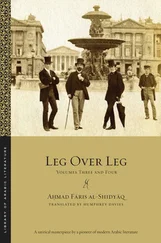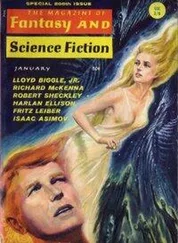or Qīq,
“a mountain that surrounds the world, also called Fīq”
or al-Sāhirah,
“a land that God will strip bare on the Day of Resurrection”
he wouldn’t stop yelling, “A woman! A woman! Who will get me a woman?” and “No life without a woman!” In fact, even if he ascended to
2.14.43
al-Mishrīq,
“a gate for repentance, in Heaven”
or Ṭūbā,
“a tree in Heaven”
or ʿIlliyyīn,
“in the Seventh Heaven, to which the souls of the Believers ascend; plural of ʿIllī ”
or al-Ḍurāḥ,
“the Prosperous House in the Seventh Heaven”
or Burquʿ,
“a name for the Seventh, Fourth, or First Heaven”
or al-Ḥāqūrah,
“a name for the Fourth Heaven”
or al-Ṣāqūrah,
“a name for the Third Heaven”
or al-Ghurfah,
“the Seventh Heaven, also called ʿArūbā; it contains the lote tree beyond which none may pass” 576
or ʿIqyawn,
“a sea of wind beneath the Throne in which there are angels of wind with spears of wind gazing at the Throne whose Magnificat is ‘Glory to Our Lord Most High!’”
or the Aʿrāf,
“a wall between Paradise and the Fire”
he would set about yelling with all the force his throat could muster, “A woman! A woman! So long as I am human, I must have a woman!” and if you were to show him such wonders as
2.14.44
the Sakīnah,
“a thing that had a head like a cat’s, made of chrysolite and ruby and with two wings”
or the Kilwādh,
“the Ark of the Torah”
or Māriyyah’s Earrings,
“she was Māriyyah, daughter of Arqam, or Ẓālim, who had two hundred dinars in her earrings, or jewels valued at forty thousand dinars, or two pearls like pigeon’s eggs the like of which had never been seen before, so she gave them to the Kaaba”
or the Bridge of Khurradhādh, the mother of Ardashīr,
“in Samarqand, between Aydaj and the fort, one of the wonders of the world, one thousand cubits in length and one hundred and fifty in height, mostly constructed of lead and iron”
the Sepulcher of Tāḥah,
“Tāḥah was the daughter of Dhī l-Shufr; Ibn Hishām 577says that a flash flood washed away the earth from a grave in Yemen in which was a woman around whose neck were seven ropes of pearls and on whose hands and feet were seven times seven bracelets, anklets, and armlets and on each of whose fingers was a precious stone and at whose head was a chest full of money and a tablet on which was written ‘In Your Name, O God, God of Ḥimyar! 578I am Tāḥah, daughter of Dhī Shufr [sic]. I sent our purveyor to Yūsuf, but he made no haste to help us, so I sent my trusted lady-in-waiting with a bushel of silver that she might bring us a bushel of flour, but she could find none, so I sent a bushel of gold, and still she could find none, so I sent a bushel of fine pearls, and still she could find none, so I ordered the pearls brought and had them ground up, but I benefited nothing and had no food to give out, so let any who hears my plight be merciful to me, and let no woman who dons one piece of my finery die any death other than mine.’”
or Dhū l-Faqār,
“the sword of Sayf ibn Munabbih who was killed at the battle of Badr; 579he was an unbeliever, so his sword became the property of the Prophet (peace and blessings upon him) and of ʿAlī” 580
or the Kashūḥ,
“one of the seven swords that Bilqīs presented to Sulaymān, peace be upon him”
or the Ḥinn,
“a tribe of the jinn to which jet-black dogs belong, or the meanest and weakest of the jinn and their dogs, or creatures between men and jinn”
or Awram al-Jawz,
“a village near Aleppo in which is a wonder, to wit, that at night the neighboring villages see firelight there in a tabernacle, but when they go to it they find nothing”
or the Raʾiyy,
“a jinni who, once seen, is loved”
or Qāyin’s horse, called Hijdam,
“it is said that, when Adam’s son, the murderer, first mounted him, he charged his brother, but the horse held back, so he said, ‘Bestir thy blood! ( hij al-dam ),’ so it surged forward”
2.14.45
or the ʿAṣāfīr,
“a kind of tree called ‘Who Has Seen My Like?’ which has the shape of birds ( ʿaṣāfīr ), plentiful in Persia”
or the Nasnās,
“a species of creature that jumps on one foot; in the hadith it says that a tribe of ʿĀd 581rebelled against their prophet, so God turned them into Nasnās, each one of whom had a hand and a foot on one side of the body and who hopped like birds and grazed like beasts; it is also said that those have become extinct and that what currently exists of that form are a separate species, or that they are of three kinds— nās, nasnās , and nasānis ; 582or that the nasānis are the females, or that they are a higher form than the nasnās , or that they are Yājūj and Mājūj, 583or that they are a group of humans, or creatures that are in the shape of people but differ from them in certain things and are not of them”
or Daʿmūṣā,
“an adulterer whom God turned into a daʿmūṣā , meaning a certain creeping thing, or a black worm such as is found in rain pools when they dry up”
or ʿAbbūdā,
“a black slave, the first person to enter Paradise”
or ʿĀmir ibn Jadarah,
“the first person to write using our script”
or Murāmirā,
“the inventor of the Arabic script”
or Abū ʿUrwah,
“a man who shouted, ‘Lions!’ and then died, and when his belly was cut open, his heart was found to have moved from one place in his body to another”
or Ṭakhmūrath,
“one of the great kings of the Persians, who reigned for seven hundred years”
or al-Waḍḍāḥ,
“a man who ruled the earth; his mother was of the jinn, so he returned to them”
or the Rābiḍah,
“angels” who descended “with Adam, or the remainder of the bearers of the Proof, which no part of the earth is without” 584
or the yabrūḥ ,
“the mandrake root, which resembles a human”
2.14.46
or Sukaynah,
“the name of the bedbug that got up Numrūdh’s nose”
or Ṭākhiyah,
“an ant who spoke to Sulaymān, 585peace be upon him”
or ʿAyjalūf,
“the name of the ant mentioned in the Qurʾan” 586
or the tukhas ,
“a sea beast that rescues drowning men by offering them its back to save them from having to swim; also called the dulfīn (‘dolphin’)”
or the jassāsah ,
“a beast to be found on islands that seeks out news and passes it on to the Antichrist”
or the rukhkh ,
“a large bird that can lift a rhinoceros”
or the karkadan ,
[“rhinoceros”] “a beast that can lift an elephant on its horn”
or the zabaʿrā ,
“a beast that can carry an elephant on its horn”
or the ʿaqām ,
“a fish, or a snake that lives in the sea — the lion comes from the land and whistles on the shore, the ʿaqām comes out to it, and they intertwine; then they part and each returns to its dwelling”
or bint ṭabaq ,
[literally, “daughter of a plate”] “the tortoise, which lays ninety-nine eggs, all of which are tortoises, and one more, which hatches to reveal a snake”
2.14.47
or the falatān ,
“a bird that hunts apes”
or the bulat ,
“a bird with burning feathers which, should they fall on other birds, burn them”
Читать дальше












